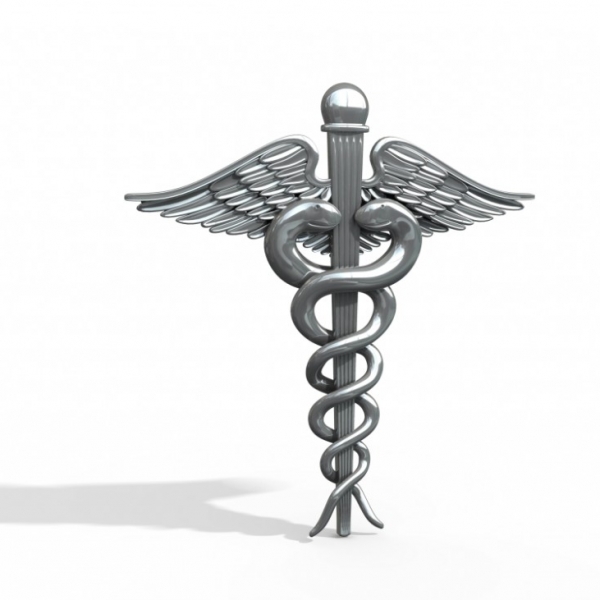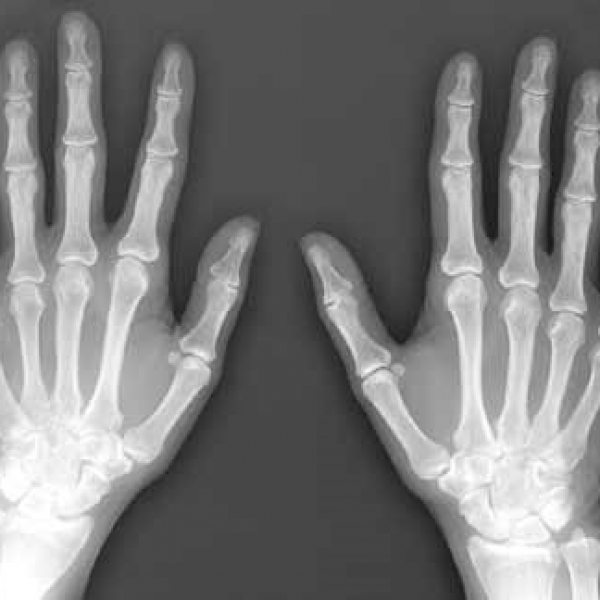Contact Admission
International Collaboration
INSTRUCTIONS FOR PATIENT REPLACEMENT OF THE HEADS
-
Stitches will be removed on the 14th day
Avoid seafood for 6 weeks. Prefer to eat more fruits and vegetables
Continue physical therapy once a week. Please follow the exercise regimen in this brochure.
There will be mild heat, swelling, numbness, and bruising that lasts about 3 months.
Follow-up to be done for 2 weeks, 6 weeks, 3 months and after 1 year
Against inflammatory drugs, antibiotics, pain relievers and lotions, to complete the whole course of drug use
Stop driving for 6 weeks
Display the card to your dentist at each visit to let them know that knee surgery has been performed. Use the card on the go, as metal sensors will beep.
The coupling is very stable and does not leak
It is possible to plan a vacation for 3-4 months
We welcome patients to visit and find information about our services. We hope you found this information useful and satisfied. At Center for Orthpaedics and Hip and Knee Surgery (Center for Orthpaedics and Hip and Knee Surgery), we always try to provide the best conditions for patients to have access to useful information. Making choices about medical care in orthopedics and sports.Patients can learn more about our services, staff, facilities and therapies through our homepage. You will be provided with medical materials to better understand orthopedic problems and recommended therapies currently available at our facility.
Knee Joints
Introduce
With knee joint problems, it can be difficult to enjoy a comfortable and active life. But with great improvements in artificial knee joints over the past 25 years, the results of knee replacement surgeries have improved significantly. The artificial knee, also known as knee arthoplasty) has become more and more popular with people as the number of elderly people in the world is increasing.
Through this introduction will help you understand more about:
The purpose of these surgeries.
Surgical process.
Desired results after surgery.
The knee joint is created where the femur meets the shin bone (tibial plateau). A smooth cushion of articular cartilage encases the ends of these bones so they can slide smoothly over each other. This articular cartilage layer is kept slippery by synovial fluid produced by the synovial (sac) membrane. This sebum is stored in a soft muscle layer around the knee joint, called a sac.The patella is the movable bone in the front of the knee. It is wrapped in the tendon that connects the large muscle bundles from the front of the thigh, the quadriceps muscle, to the lower leg bone. The rear surface of the kneecap is covered by the articular cartilage. It slides in a groove in the front of the femur.
Basic principle
What does the surgeon want to achieve?
The main reason to replace any inflamed joint with an artificial joint is to prevent the bone clots from rubbing together. This friction is painful. Replacing the painful inflammatory joint with an artificial joint gives the joint a new surface that can move smoothly and without causing pain. The goal is to help the person return to more of their activities with less pain and move more freely.
Prepare
What should I prepare for surgery?
The consensus decision should be made by both you and your surgeon. This decision should only be made after you have felt as much as you can about the surgery.
Once you have decided on surgery, there are a few things that need to be done. Your orthopedic surgeon may recommend a complete checkup with your regular doctor. This is to make sure you are in the best possible health for the surgery. You may also need to work with a physical therapist who will help you recover from the surgery. The therapist will begin the preoperative guidance process to make sure you are ready for later rehabilitation.
The purpose of seeing a pre-operative doctor is to record benchmarking information, including measurement of current pain level, function, degree of swelling if present, and mobility and force of each knee.
The second purpose of preoperative therapy is to help you prepare for your next surgery. You will do some exercises to use right after the surgery. You will also receive training in how to use a pushchair or crutch. (Depending on whether or not the surgeon uses an artificial joint with fixed cement will determine how much gravity you will put on your foot when you first walk.) Lastly, there will be an assessment of any needs you need at home upon discharge. The kneecap of the artificial part is usually fixed in place with special cement. The decision to use an artificial knee with cement or not will be made by the surgeon based on your age, lifestyle, and doctor's experience.
Each artificial joint consists of three main parts. The tibial plateau (lower segment) replaces the upper surface of the shin bone - tibial plateau. The femur (upper segment) replaces the lower surface of the upper leg (femur) and the groove containing the kneecap (the kneecap) replaces the surface of the patella, where it slides in the femoral groove.
The femur is made of metal. The tibia usually consists of two parts: a metal tray attached directly to the bone, and a plastic pad that creates a smooth surface. The plastic used is so sturdy and lustrous that you can skate on a piece of plastic like that without any hiccups. The patella part is usually also made of plastic. In some knee transplants, the organ you tea is a mixture of metal and plastic.
A cemented artificial joint is fixed in place with a two-component glue that attaches metal to the bone. The non-cement type has a very fine mesh of holes on the surface, allowing bones to grow into the mesh and attach artificial joints to the bones.
Surgery
To start the procedure, the surgeon cuts a line into the front of the knee to access the joint. There are a few different ways of cutting. Whichever method is used is usually chosen by the surgeon based on the school and doctor's preferences.
Once the knee joint has opened, a special position finder (surgical guide) is placed at the end of the femur where the bone is cut straight from the leg's natural rotation, even if arthritis causes you to bend inwards or bend your knees inward. With an instruction pad, the doctor will cut a few pieces of bone at the end of the femur. The artificial knee will replace these worn surfaces with a metal one.
Next, the tibial surface will be edited. Another type of surgical guide is used to cut the tibia in the correct paths.
Then the patio joint surface was removed.
The metal femur will then be placed on the femur. In a non-cement joint, a piece of metal is held firmly to the femur because the femur will be cut into a pyramid to precisely match the shape of the joint. The metal part is pushed into the end of the femur and held in place by friction. With cementitious, a two-component glue is used to attach the metal joints to the bone.
The metal tray used to hold the plastic seal will be attached to the top of the tibia. This metal tray is either fixed in position with cement, or with screws if it is non-cement surgery. The main screw is to hold the tibial plateau in place until the bone grows into the spongy sheath. (This snail stays there and will not be removed).
The plastic gasket is then attached to the metal tray of the tibial plateau. In the event that the part is worn out while the artificial knee is still in good shape, it can be replaced. The replacement procedure is called Reconstructive Surgery.
The doctor will then cut the kneecap and place it behind the kneecap. This pattern is usually fixed with cement.
Finally, the soft tissue is re-sewn, and a stapler is used to hold the cut leather edge together.
Symptoms
What could be bad?
As with all major surgeries, complications can occur. This brochure does not list all complications, but it will cover some of the most common ones. Some of the most common complications after an artificial knee replacement are
Complications of anesthesia
Thrombophlebitis
Infection
Stiffness
Loose
Complications of anesthesia
Most surgeries need some kind of anesthesia / anesthesia before they can be performed. A very small number of patients have problems with the anesthetic. These problems can be drug reactions, problems related to other medical complications, and problems with the anesthetic itself. Be sure to discuss your risks and concerns with the anesthesiologist.
Thrombophlebitis
Thrombophlebitis, sometimes called Deep Vein Thrombosis (DVT), can occur after any of these surgeries, but most often occurs after hip, hip, or knee surgery. . DVT occurs when blood clots form in the large veins of the leg. This can cause the feet to become swollen and warm to the touch, and cause pain. If the blood clots in the veins rupture, they travel to the lungs, where they build up in the capillaries and cut off the blood supply to part of the lung. This is called pulmonary embolism (An embolism caused by something moving through the circulatory system).
Most surgeons take DVT very seriously. There are many ways to reduce the risk of DVT, but perhaps the most effective is to move as soon as possible after surgery. Two other commonly used preventative strategies include.
Pressure socks to circulate blood in your legs
Take medications that thin the blood and prevent blood clots from forming
Infection
Infection is a very serious complication following a joint replacement surgery. The likelihood of infection following an artificial knee replacement is probably about one percent. Some infections can happen very early, even before you leave the hospital. Others may not show up until months or even years after surgery. Infections can spread from infected areas to artificial joints. Your surgeon may ask you to take antibiotics when you have dental work or surgery on your bladder and colon to reduce the risk of spreading germs to your joints.
Stiffness
In some cases, the knee joint has not returned to normal after a knee replacement surgery. To use your legs effectively when you are sitting in a chair, your knees must be bent at least 90 degrees. Expected motion amplitude is greater than 110 degrees.
The most important factor in postoperative motion amplitude is the ligament and soft tissue that are in balance during surgery. The surgeon tries to position the knee in the most immediate position so that there is equal tension across all ligaments and soft tissues.
Sometimes scar tissue develops after surgery and can cause increasing stiffness in the knee. If this happens, your surgeon may suggest returning you to the operating room, anesthetizing you again, and adjusting your knees to repeat movement. This basically lets the doctor cut and stretch the scar tissue without feeling anything. The goal is to increase the mobility of the knee without damaging the joint.
Loose
The main cause of an artificial joint failure is still the gradual loosening where metal or cement comes in contact with the bone. Big strides have helped extend the service life of a joint, but most will loosen and need to be monitored. Hopefully you'll be able to use the artificial knee for 12 to 15 years, but in some cases the knee will loosen much sooner than that. A loose artificial joint is a problem because it is often painful. When the pain becomes unbearable, another surgery may be needed to repair the knee joint.
Postoperative
What happens after the surgery?
Some orthopedic surgeons recommend using a device called a passive knee exercise machine (CPM) right after surgery. This device is believed to help prevent blood clotting and help the wound heal quickly. It can also help the patient recover without taking a lot of medication. This device can help restore the ability to move the knee after a knee replacement surgery. However, the patient also seems to be able to exercise on his own to move his knees.
You may also have physical therapy once or twice a day while you are in the hospital. Physiotherapists will target the knee motion margin. Gentle movements will help you bend your knees. If you are using a CPM machine, it will be checked for settings and arranged in a straight manner. Your legs can be lifted to help drain excess fluid in your leg.
Your VLTL doctor will also instruct exercises to help increase knee movement and begin training your thighs and hips. Movement of the ankle helps reduce swelling in the legs and prevents the risk of blood clots.
Once you are settled, the VLTL doctor will help you get up and walk for a while, using a crutch or a walk chair.
Most patients will be able to go home after four to seven days in the hospital. You will be on your way home when you demonstrate the ability to get on / off the bed, walk 23 meters on crutches or a walker, go up and down stairs safely, and use the bathroom. It is also important to regain good front-thigh muscle elasticity, and good knee movement. Patients who still need a lot of care are likely to be transferred to another department until they are ready and can safely return home.
Most orthopedic surgeons will recommend regular follow-up visits after your osteoarthritis surgery. The frequency is usually from every six months to every five years, depending on your situation and your doctor's recommendations. You should consult your surgeon every time you shoot a joint pain, or if you begin to suspect something is not working smoothly.
Most patients with osteoarthritis will experience some pain, but when you have been in pain for more than a few weeks you should consult your surgeon. Your doctor will examine your knee to find the cause of the pain. Knee X-rays may be required to compare with past X-rays to see if the artificial joint shows signs of looseness.
Rehabilitation
What will I go through during rehabilitation?
After discharge, you can see a VLT specialist one to six times at home. This is to make sure you are safe in and around the home, and when getting in and out of a car. Your therapist will make recommendations for your safety, reassess your exercises, and continue with you to increase your knee range. In some cases you may need more home visits before switching to VLTL in hospital. Home visits will end once you are safely left home.
Followed by trips to practice VLTL at the specialist's agency. Your therapist can use a walker or crutch depending on your doctor's orders. If you are doing surgery with cement, you can put as much strength as you need into the sore leg as much as you feel comfortable. If it is a non-cement surgery, you can only put your toes down, until you have an X-ray and the surgeon or VLT specialist instructs you to put more force down your leg (usually next year. six weeks after surgery).
A specialist can use stretching exercises to increase the range of motion. Strength exercises work on major muscle groups, including glutes, hips, thighs, and calves. Endurance is exercised through spot cycling, swimming and using the upper body (manual cycling).
Experts sometimes practice with patients in the swimming pool. Exercising VLTL in the pool reduces pressure on the knee joint, and when it floats you can move and exercise more easily. Once you have completed your pool exercise and the restorative program has gone well, you will likely be guided through a self-exercise program.
Once you have the full force of gravity on your feet safely, several types of balance exercises can be chosen for better knee stability and control.
Finally, a group of exercises was selected to mimic everyday activities, such as going up and down stairs, squatting, leaning toes up, and bending. Specific exercises can then be selected to simulate work or leisure requirements.
Many patients have less pain and have better mobility after knee replacement surgery. Your specialist will work together to help keep your knee joint healthy for as long as possible. To do so, you may need to change your activities to avoid overuse on the knee joint. Heavy sports require running, jumping, stopping or starting suddenly, and double cutting is recommended to stop. Cycling, swimming and plain walking are recommended, as are less impact sports such as golf or bowling.
The goal of the VLT specialist is to help you increase your range of motion, maximize fitness, and develop your ability to perform activities. When your recovery is going well, regular VLTL exercise is still a good source of enhancement, but you will be the one in control of your exercises, as part of the home exercise program.
PREPARE YOURSELF AND FAMILY BEFORE THE Surgery
Recovery is a slow and time-consuming process after surgery. Make a plan for going home before admission.
Ask your spouse, children, friends or neighbors if they can assist you in
one, two weeks after discharge no.
Plan for a temporary reduction in activities
Make a plan for pre-hospital cleaning and cleaning. Put away the rugs
small and tidy up messes out of the way.
If possible, rearrange your bedrooms to allow more space when climbing
getting on / off the bed
Place a sturdy chair with armrest in the living room, near a table
for books, entertainment, TV remote control, telephone (wireless
as possible), or any other furniture you need, keep them within reach.
Rearrange kitchen so common items are easy to access. Leave them in
The heights fit your height so that you don't have to end up reaching for them.
Adding a sturdy chair in the kitchen also helps.
Do some dishes first, remove the freezer
If possible, ask the courier and report it to the door
Ask your religious group to arrange a visit while you are recovering, if
need
WHAT TO TAKE TO THE HOSPITAL
Comfortable walking shoes or sneakers are not slippery. Should use lanyard
elastic shoes to avoid bending down to tie shoelaces. Sports shoes are also available
Double clip and hook for easy removal.
A warm, pillow-length bathrobe, type front.
Your walker, crutches or other assistive devices, such as leg braces,
cast or fixed belt
Home wear should be soft, loose, with a pocket or a side pocket
bring small items.
PREPARATION FOR THE SURGERY
You and your doctor will decide when to go to hospital. It is important to follow the directions
lead following:
Six hours before the surgery, there was nothing to eat or drink, including water. Your stomach
The rod is empty prior to anesthesia. This will prevent nausea and vomiting
vomiting and other complications during and after anesthesia. The surgery may have to be
if you have any meals or drinks before, reschedule.
Take a bath or bath the night before the surgery, to reduce the amount of bacteria on the skin.
It can help reduce the risk of infection after surgery.
Getting enough sleep the night before your surgery is very important. If you are in the hospital that night and cannot sleep please talk to the nurse. Sleeping pills can help you relax and help you fall asleep.
No makeup on the morning of surgery. Without makeup, it will reduce the amount
bacteria on the skin, reducing the risk of postoperative infections.
Only take medications prescribed by your doctor or nurse on the morning of the operation.
Drink with a small amount of water just enough to swallow.
Morning of Surgery
-
After admission, the nurse will measure your temperature, heart rate, breathing rate and blood pressure.
Supporting socks (brand name TED) may be given to you to increase your weekly blood count
complete in foot. A sequential contraction device can also be used with the itemthe same destination.
The infusion needle may be attached before surgery.
Going for surgeryYou will be asked to urinate to empty your bladder
Remove all jewelry (including rings), dentures, contact lenses, and clean the paint
nailsRelatives and friends will be instructed where to wait
An operating room assistant will take you into the preoperative area with a bandage
The sore leg can be rubbed clean and shaved to prepare for surgery.
The anesthetist will discuss the method of anesthesia.
WHAT TO EXPECT FOR AFTER SURGERYAfter the surgery, you will be taken to the Anesthesia Resuscitation Room (PACU). Your family member will be notified when you get there. One of the most important functions of the PACU is to control pain and vomiting when you are out of the anesthetic. The nurses and anesthesiologist will monitor your vital signs, alertness, pain or comfort level, and when to take the medication.
In the recovery room you will notice a variety of equipment. The room with the lights on is very bright, and when you wake up the sound will sound louder than usual. If it is cold, have a blanket in the room. If you have to breathe through an oxygen mask, that's fine.
The average length of stay in the recovery room is about 1 to 2 hours. If it takes significantly longer, the family member can check with the nurse. When the anesthesiologist decides that you are allowed to leave the recovery room, the nurse will take you back to the room.
After returning to the room, your blood pressure, heart rate, facial color, body temperature, movement and feeling of your feet, heels, feet and the bandage on your knee will be checked as often as 24 hours. head. Tell the nurse of any swelling, numbness or stinging on your legs, feet or heels.
You will receive fluids for one to two days after surgery. Notify the nurse if you experience pain or redness around the infusion needle.
Once you have been able to drink water, your diet will gradually shift back to solid foods. If the surgeon prescribes an antibiotic it can be administered intravenously. Antibiotics are used to prevent infection.
Two small rubber conductors will be used to draw blood and excess fluid from the cut wound area. These lines are usually drawn one or two days after surgery, when the fluid has subsided.
A tube called a catheter will be inserted into your bladder to draw urine during and after surgery. The catheter may make you feel like your bladder is full and urinating. If you feel this is or have any other problem with the catheter, please contact the nurse. The time to use the catheter after surgery varies depending on the type of surgery you perform, as well as as directed by your doctor.
Oxygen can be pumped through a mask or nose clamp to make breathing easier. The oxygen device was stopped after a short time.
HO AND DEEP
You are advised to cough and breathe frequently during the first few days of surgery. To make coughing easier, take a slow, deep breath. Inhale through your nose and focus on widening your chest. Exhale through your mouth and focus on the sensation of your chest sinking in and out. Then take a second breath for a while. Done and coughed hard. When you cough, focus on squeezing all the air out of your chest. Repeat this exercise 2 more times.
A bar attached to the hospital bed will make it easier to move around. The sliders at the bedside can be raised to protect you.
It's okay to feel pain or discomfort after surgery. Tell the nurse if you experience pain or discomfort. When you are in pain, the nurse will ask you to rate the pain on a scale of 0 to 10 (0 = no pain, 10 = pain that is beyond your imagination). Your pain may not be completely eliminated, but pain relievers may be prescribed to make you more comfortable.
Talk to the nurse if you experience any discomfort. If you suspect that the pain reliever is causing nausea or other symptoms, talk to your nurse.
WEEKLY SUPPORT
The circulatory support promotes blood return to the heart and reduces the risk of a blood clot while you can't exercise much after surgery.
The support sock (of TED) is a type of cyclic support (figure 1). Bring them into the operating room and during the entire hospital stay. Your socks will be removed as often as possible to allow ventilation on skin.
Depending on the surgeon's request, a sequential contracting device (SCD) may also be used several days after surgery (figure 2). These are plastic shin tubes that wrap around each leg to promote blood circulation. Tell your nurse if you experience any stinging, numbness, or other discomfort wearing either of these assistive devices.
EXERCISE
Exercising your legs after surgery is one way to boost blood flow and reduce your risk of developing a blood clot.
To do foot exercises, push your toes toward the foot of the bed. Then pull the leg brace up
towards the head of the bed (figure 3). Relax. Repeat this exercise 10 times per hour
when you are awake.
To practice legs, lie on your back. Squeeze the muscles in your upper thighs using your knees
get off the bed. Hold for five seconds. Relax. Repeat this exercise 10 times each
on your feet, every hour you stay awake.
After the surgery, you can use a pillow or a small soft pad under your leg to keep the heel gaping from the bed. This will keep your heels from scratching the sheets, causing pain. You should never put pillows under your knees, which will lose your ability to straighten your legs.
CPM MACHINE
Your sore leg can be placed into a machine for continuous passive motion (CPM) after surgery. Place the center of the kneecap in the crease of the CPM machine. Do not manually adjust the CPM.
The CPM machine will replace you and move your knees while you are in bed. While your foot is in the machine, it will continuously be bent and stretched. The flexing foot process is called flexion. When you stretch your legs, it is called an extension.
Although it seems like the CPM machine will cause discomfort after the surgery, it will actually help you recover faster.
Your doctor may find you need more practice to stretch your legs.
PHYSICAL THERAPY
After surgery, the surgeon will refer you to physiotherapy. To get more comfortable with exercise and walking, you will likely need pain relievers 30 to 45 minutes before your workout.
A VLTL specialist will teach you how to walk with the right tools. These devices will help you practice walking by letting you lift part of the weight with your hands, instead of putting all of the force on the sore leg. The VLTL specialist will show you how much force you can put in your leg. Before going home, the expert will teach you how to climb stairs and get into bed, chair and toilet.
A VLTL specialist and surgeon will run an exercise program for you. Your specialist will write down training instructions at home if ordered by the surgeon. The aim is for you to be as independent in your care and carry out your activities as possible. Your participation is key to increasing independence.
GUIDANCE ON EXPORT AFTER THE FULL CO-COOKING SURGERY
Our team from the Hip and Knee Trauma and Surgery Center will provide resources to help you and your family after you leave the hospital.
WORK
Everyone's postoperative progression is different. Your previous activity level can make a difference in how fast or slow you can return to normal activities. Listed below are instructions for you to follow. Do all the individual instructions from your surgeon, nurse, and physiotherapist until new instructions are available, usually until you return for your follow-up visit. Activity and exercise must be done periodically throughout the day. They help you regain the function of the operated joints. See the VLTL specialist's directions and your surgeon's note. See Appendix A.
Use a walker at all times. Only part of the weight is put on the foot as required by the surgeon or specialist in VLT. Using a walker will provide you with safety and stability, allowing soft tissues to heal faster and regain their normal strength.
Walk at least four times a day. When you feel you can still do it, increase your length and number of rides per day.
Change positions (sit, walk, lie on your back, or lie on an incline 30 to 40 degrees) every hour while you are awake.
Do not kneel, squat, twist, dance or exercise excessively in the future. Avoid any kind of movement that causes knee pain.
Do not leave pillows under the knees when lying in bed or in a chair.
Allowed to lie on their side on the bed,
Only sit on chairs with armrests. Do not sit too low.
Use the extended toilet seat to make using the toilet easier. In public places, use toilets for people with disabilities.
Climb stairs the way you learned in VLTL class.
When entering a car, sit in the front seat, slide your butt back, and then have someone support you with both feet in the car at the same time. If you are in a car, stop and walk every one or two hours.
Do 15-minute stretches (or better if you have power) regularly throughout the day to help stretch your knees. When lying in bed, place pillows under your ankles or heels. You can do the same in a chair, with your feet resting on the footrest.
Do a few crunches a day. Sit in a chair, feet firmly on the floor. Slide your butt forward. This exercise will help your knees flex more, if you don't lift your foot as you slide forward.
DRIVER
Try not to drive for the next 6 weeks.
INCREASE HEAVY ANIMALS
Do not lift anything more than 10 kg (20 pounds) for the next 3 months.
SEXUAL ACTIVITIES
Many patients are allowed sexual intercourse after follow-up, depending on the severity of the surgery. The two braids should use facing each other, or the patient should lie on their side. Feel free to discuss this with your surgeon, nurse or specialist in VLTL.
NUTRITION
Abstain from seafood for 6 weeks. They can cause itching in the incision.
Eat a variety of foods to maintain a balanced nutritional diet. This means eating from all food groups every day. Whether the wound heals or not depends on a balanced diet.
Constipation can occur as a side effect of pain relievers, and also as a result of inactivity after surgery. Eat foods high in fiber to help prevent constipation, such as fresh fruits, vegetables and whole grains. Drink six to eight glasses of water a day unless otherwise indicated.
Be careful when taking vitamin supplements like A, D, and E. Avoid supplements that contain more than 100% of the recommended daily intake of these vitamins.
CONTROL PAIN
You may experience knee discomfort a few weeks after surgery. Increased activity is essential, but can also be painful. Pain relievers will be prescribed. Take medication as directed to help you exercise more effectively and possibly increase activity intensity.
As soon as possible, start gradually reducing the dose of pain reliever.
NAIL GARDEN
Within 6 weeks after surgery:
Place an ice pack on your knees before and after you exercise to relieve pain and swelling, as directed by your doctor. Do not use hot packs as this will make the knee joint swell.
WASTE CARE
Do not get the tape wet
The sutures will be removed, and the cream will be applied to the cut two days later. Centellase helps the wound heal and prevents the scar from forming.
TAKE A BATH
Do not take a bath or soak in the tub until your follow-up visit.
When you get home, you will need a sponge bath. Wash around the wound. 2 days after the thread is cut you can wet the wound. Avoid scrubbing the wound.
When you feel well enough you can take a shower with help. Sit in a chair to avoid slipping and avoid putting too much pressure on your sore leg. Let the water run through the wound and then pat it dry.
WARNING OTHER DOCTORS AND DOCUMENTS IN THE FUTURE
You must always protect this new organ from infection. We will give you a prevention card. Be prepared to use another baby before and after an invasive procedure from now until the end of life to protect the new joint from infection.
-
Always inform your doctor and dentist that you have a knee replacement.
If you have any of the following surgery you will need antibiotics: dental (including dental cleaning services), catheterization, any type of surgery, colonoscopy, colon, bladder, or any other surgery. any procedure that involves inserting an instrument or tube or wire into your body.
WARNING YOUR DOCTOR AND DOCTOR IN THE FUTUREWHEN NEED TO CONTACT THE PRACTICE PRACTICE
Contact your surgeon for any of the following:
Fever (38 degrees C for 2 days)
Pain gets worse and doesn't get better with pain relief methods.
Pus flows from the wound
Foot color and temperature change
Nosebleeds or blood in the urine
When you fall
THERAPY MODENext you will study the therapeutic regimen. Once you've stabilized your health, your professional will help you get out for a short while using crutches or a walker. Treatment sessions will continue once or twice a day. You will be able to go home when it has been shown that you can safely get on and off the bed, walk up to 10 meters using a crutch or a walker, sit up, spasm your upper thigh (thigh muscles), and increase knee range.
ANCIENT PUMP
Feet up and down. This is very important, to help prevent blood clots from forming. This should be done both before and after surgery.
TRACKING CORN
Lift the whole leg off the bed. Don't think you'll be able to do this right after surgery, as some muscles will definitely be weaker. However, this exercise helps to restore the firmness and strength of the muscles in the front thighs.
TRIPLE TRAINING (IN BED)
Use a towel to help flex the pillow
FOOT TRACK (IN BED)
Roll a towel or use a long pillow under your knee, straighten your legs. It will help strengthen the thigh muscles after surgery.
TRUCK (ON THE SEAT)
Sit in a chair, use strong legs to try to bend the operated knee. It will help you regain your knee flexion.
TRAVEL (ON THE SEAT)
Use a strong leg to support the operated knee. Lift it off the ground.
Source: https://cfo.com.sg/
Translation summary: Dr. Nguyen Huu Tung et al
Other news
- Home AEDs: High Life-Saving Effectiveness, but Not Cost-Effective at Current Prices ( 14:12 - 18/12/2025 )
- Artificial Intelligence and Pediatric Care ( 08:27 - 16/12/2025 )
- Applying Clinical Licensing Principles to Artificial Intelligence ( 09:36 - 08/12/2025 )
- U.S. Approves Targeted Lung Cancer Therapy Datroway ( 08:43 - 25/06/2025 )
- Therapeutic potential and mechanisms of mesenchymal stem cell-derived exosomes as bioactive materials in tendon–bone healing ( 08:38 - 23/11/2023 )
- Symbol of medicine ( 19:38 - 19/09/2021 )
- The history of the development of medicine worldwide and in Vietnam ( 18:58 - 19/09/2021 )
- Pharmacology in mind ( 08:42 - 04/02/2021 )
- Nitric Oxide and other medical contributions over 2 decades ( 08:19 - 11/12/2020 )
- Scientists Create First Full-Size 3D Printed Human Heart Model ( 09:32 - 10/12/2020 )


















